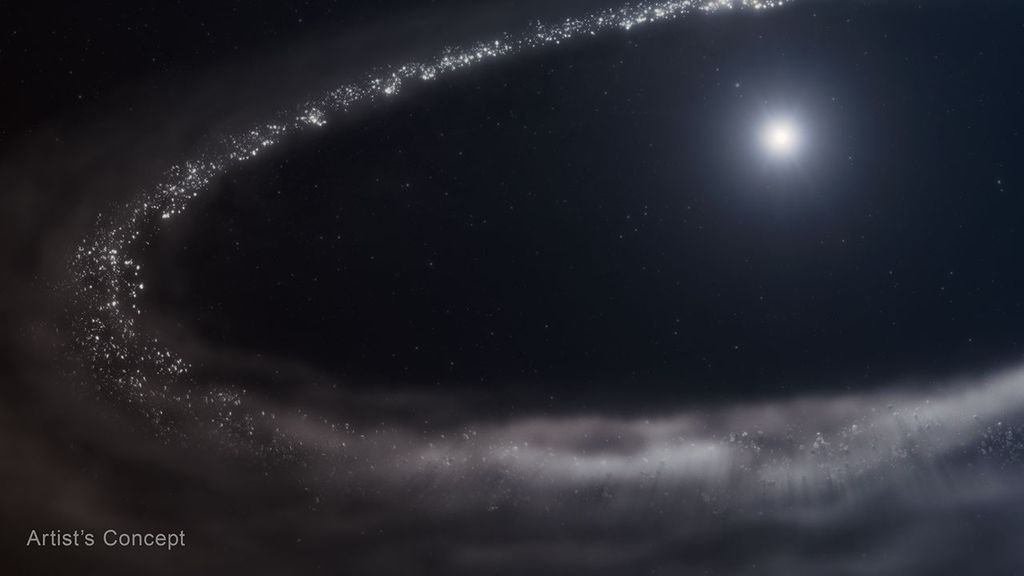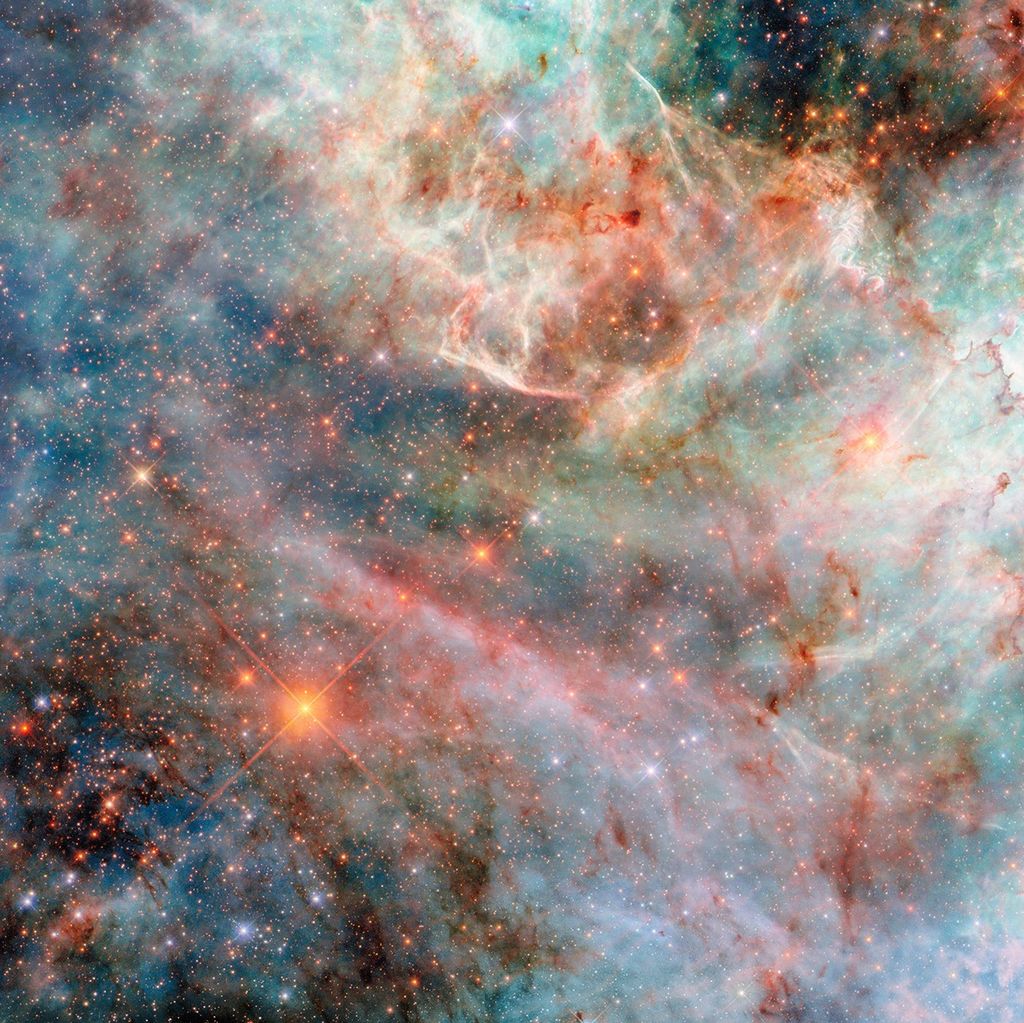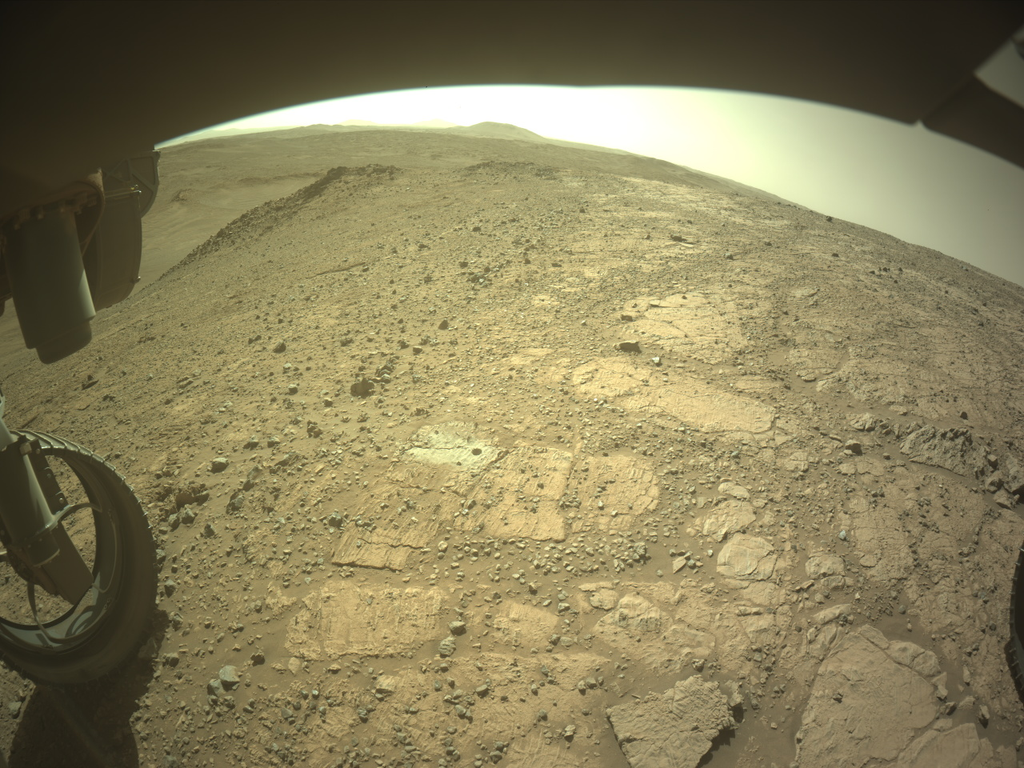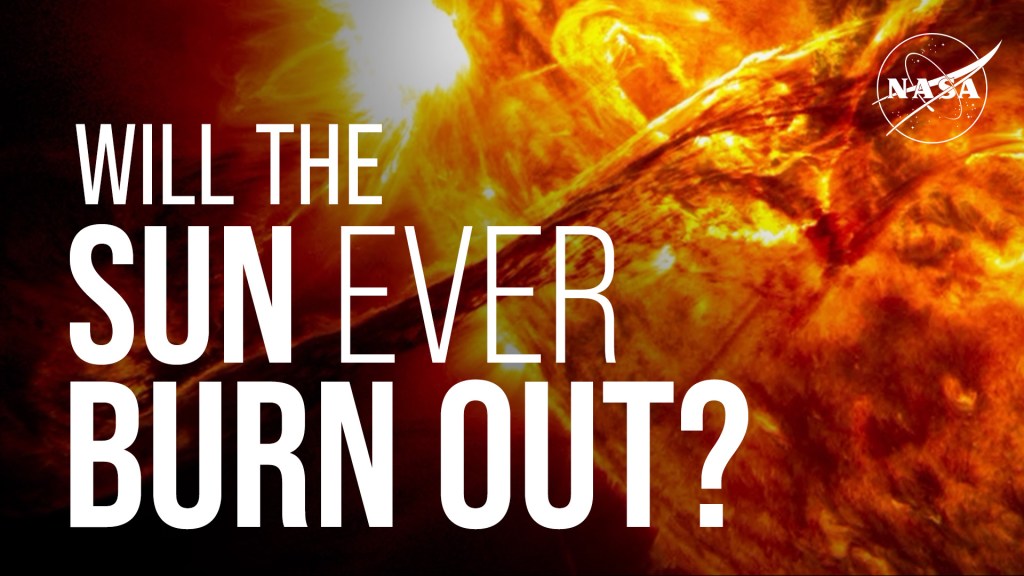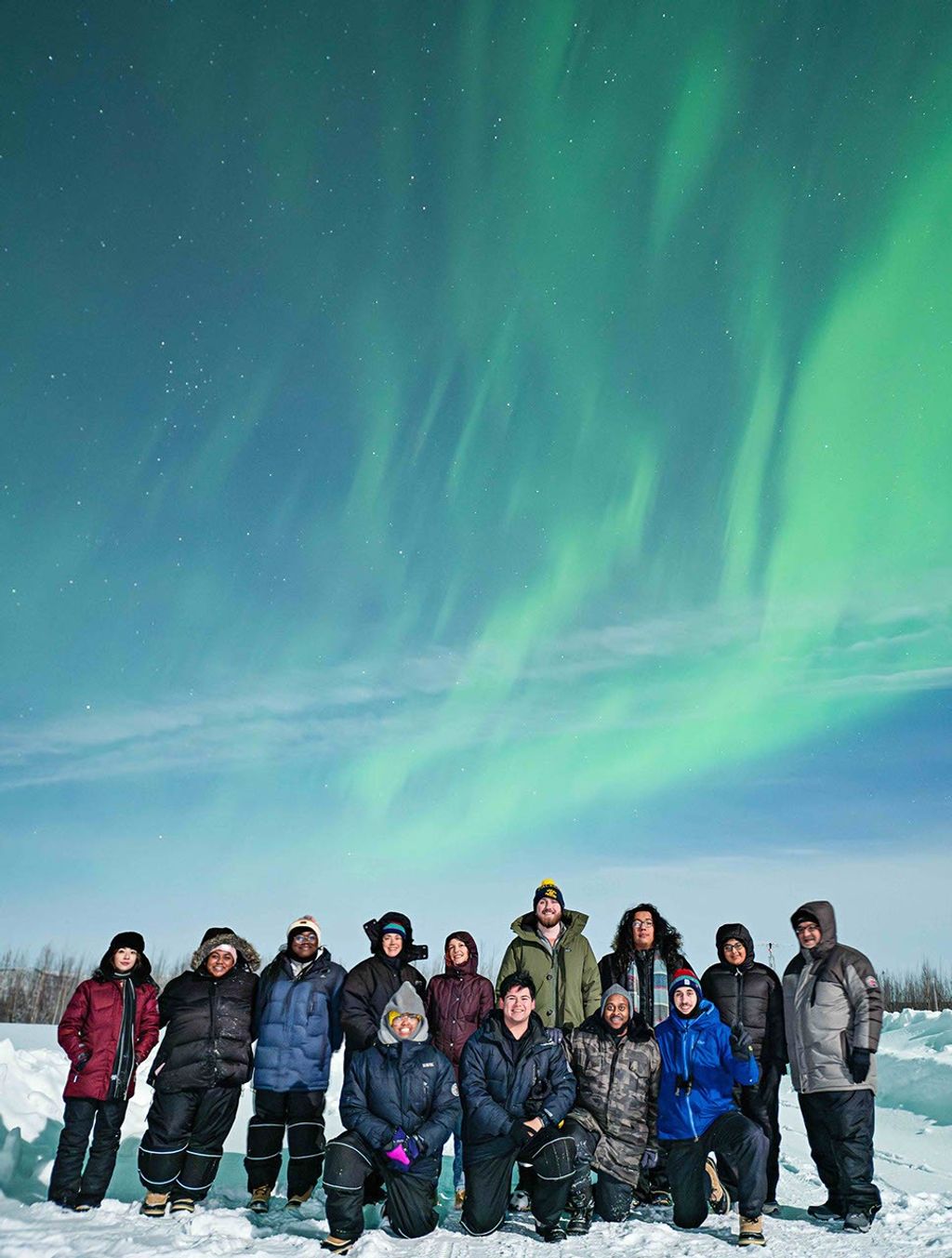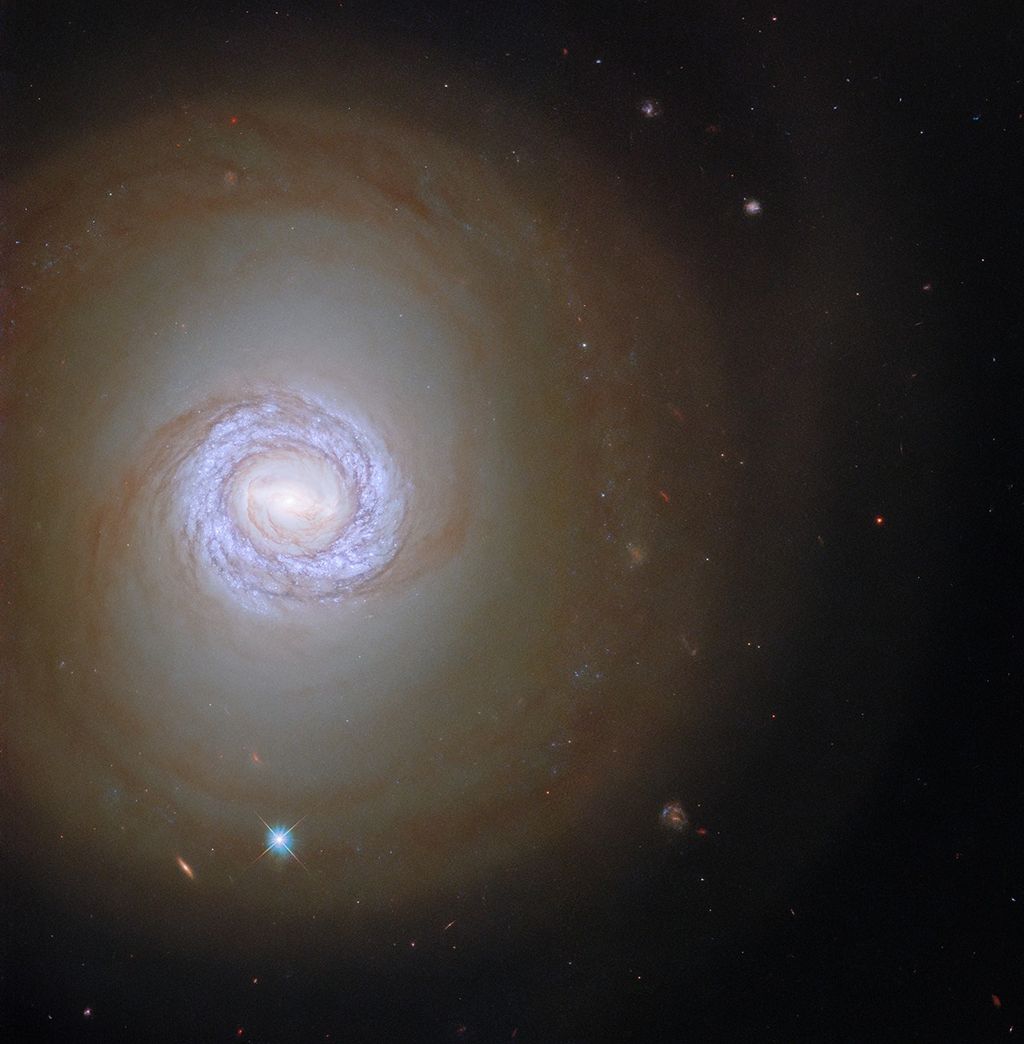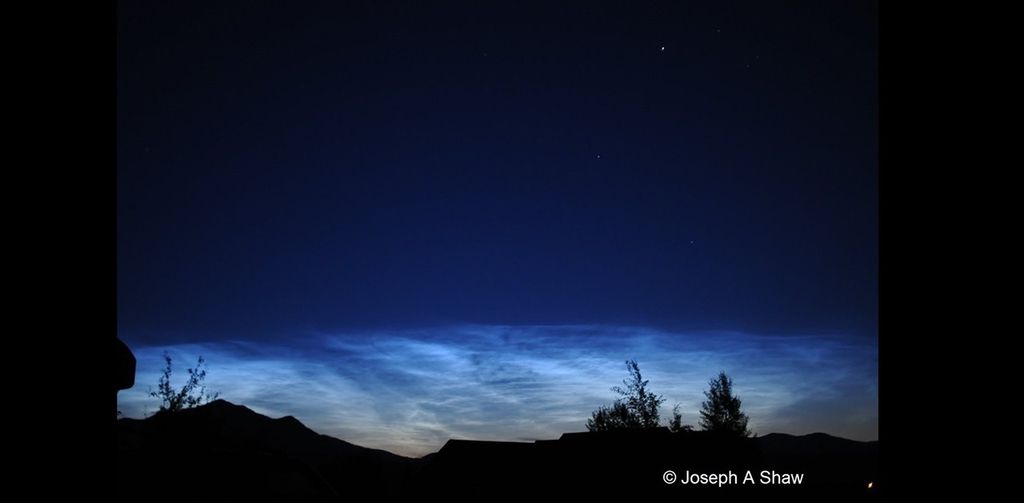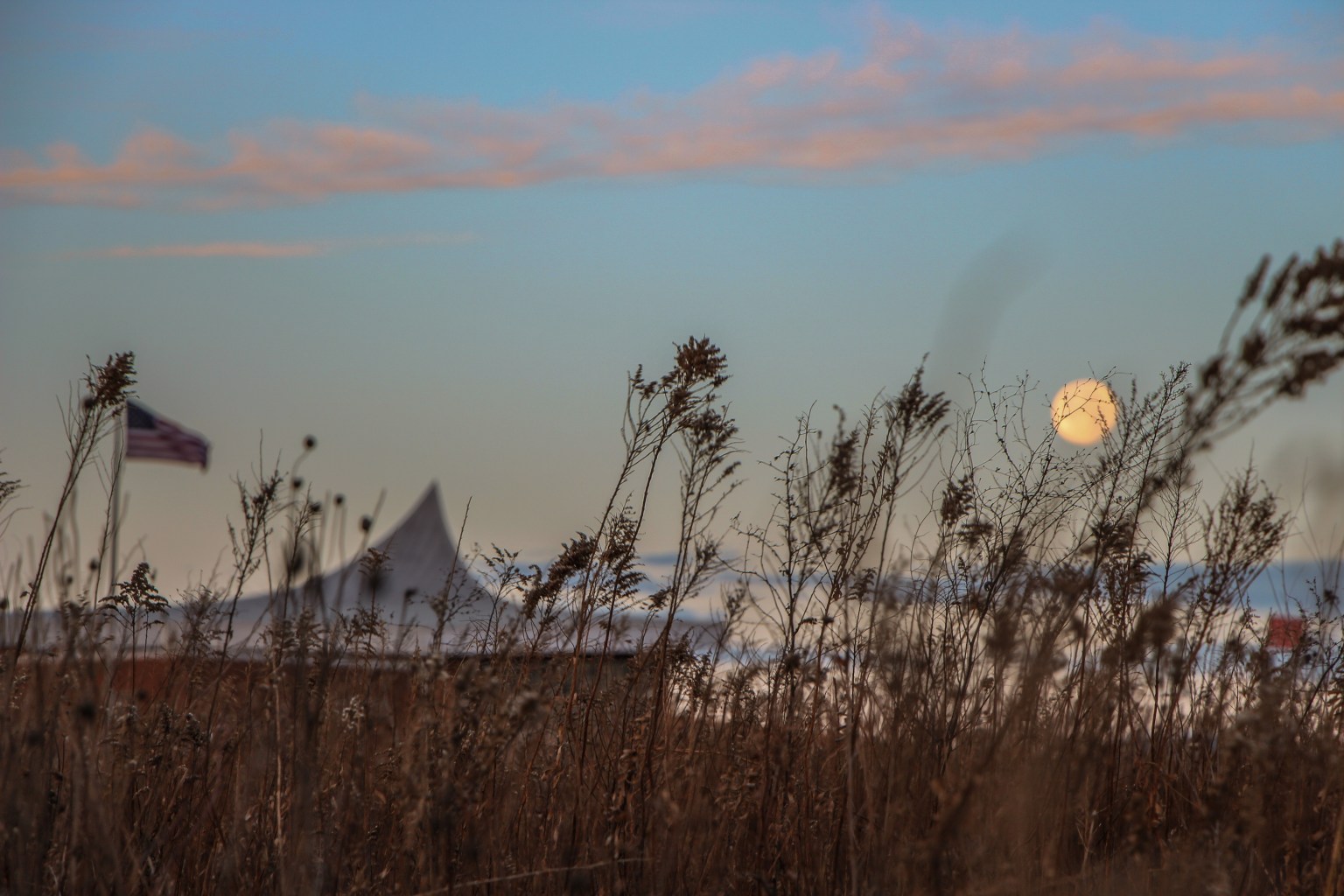The Next Full Moon is a Supermoon, a Blue Moon; the Sturgeon Moon; the Red, Corn, Green Corn, Barley, Herb, Grain, or Dog Moon; Raksha Bandhan or Rakhi Purnima; and Tu B'Av.
The full Moon will be Monday afternoon, August 19, 2024, at 2:26 PM EDT. This will be Tuesday morning from Nepal Standard Time eastward across the rest of Asia and Australia to the International Date Line. The Moon will appear full for three days, from Sunday morning through early Wednesday morning.
This will be a supermoon. The term "supermoon" was coined by astrologer Richard Nolle in 1979 as either a new or full Moon that occurs when the Moon is within 90% of its closest approach to Earth. Since we don't really see new Moons, what has caught the public's attention are full supermoons as they are the biggest and brightest full Moons of the year. This will be the first of four consecutive supermoons this year (with the full Moons in September and October virtually tied for the closest of the year).
Although it will not look blue, as the third full Moon in a season with four full Moons, this will be a Blue Moon. The first recorded use of "Blue Moon" in English dates from 1528. Speculations on the origin of the term include an old English phrase that means "betrayer Moon" (because it led to mistakes in setting the dates for Lent and Easter). Or it may be a comparison to rare events such as when dust in the atmosphere makes the Moon actually appear blue. Since the 1940s the term "Blue Moon" has also been used for the second full Moon in a month that has two full Moons.
Although it will not look blue, as the third full Moon in a season with four full Moons, this will be a Blue Moon. The first recorded use of "Blue Moon" in English dates from 1528.

Gordon Johnston
Retired NASA Program Executive
The Maine Farmer's Almanac began publishing "Indian" names for full Moons in the 1930s and these names have become widely known and used. According to this almanac, as the full Moon in August the Algonquin tribes in what is now the northeastern USA called this the Sturgeon Moon after the large fish that were more easily caught this time of year in the Great Lakes and other major bodies of water. Other names reported for this Moon include the Red Moon, the Corn or Green Corn Moon, the Barley Moon, the Herb Moon, the Grain Moon, and the Dog Moon.
A quick note for my Southern Hemisphere readers (as I've heard from some recently). Many lunar names and traditions are based on the Northern Hemisphere seasons (I'm interested in learning more about southern traditions). I've noticed some publications shifting names like the Sturgeon Moon by 6 months (e.g., using the northern February names for August). Also, for the detailed descriptions below, instead of looking south towards the Moon and planets you will be looking north, so what I describe will be upside down. Finally, the seasons are reversed, so morning and evening twilight times, etc., will be very different.
This full Moon corresponds with the Hindu festival Raksha Bandhan, also called Rakhi Purnima, celebrating the bond between brothers and sisters. One of the traditions is for sisters of all ages to tie a rakhi (a cotton bracelet) around their brother's wrist, receiving a gift from the brother in return as a sign of the continuing bond between them. The term "Raksha Bandhan" translates as "the bond of protection, obligation, or care."
In many traditional Moon-based calendars the full Moons fall on or near the middle of each month. This full Moon is near the middle of the seventh month of the Chinese year of the Dragon, Safar in the Islamic calendar, and Av in the Hebrew calendar. Av corresponds with Tu B'Av, a holiday in modern Israel similar to Valentine's Day.
For science fiction fans, a note on the author Theodore Sturgeon (1918-1985) in honor of the Sturgeon Moon. Theodore Sturgeon wrote mostly science fiction but some horror and mystery stories. For Star Trek fans, his scripts introduced important concepts, although only "Shore Leave" and "Amok Time" were produced. He introduced "pon far," the Vulcan hand symbol, "live long and prosper," and the "Prime Directive" (in a script that was not produced but that influenced later scripts).
As usual, the wearing of suitably celebratory celestial attire is encouraged in honor of the full Moon. In addition, enjoy the super blue Moon, keep in touch with your siblings, and consider reading some Theodore Sturgeon.
As for other celestial events between now and the full Moon after next (with specific times and angles based on the location of NASA Headquarters in Washington, D.C.):
As Northern Hemisphere summer nears its end the daily periods of sunlight continue shortening, changing at their fastest around the equinox on September 22. On Monday, August 19, (the day of the full Moon), morning twilight will begin at 5:24 AM, sunrise will be at 6:26 AM, solar noon at 1:11 PM when the Sun will reach its maximum altitude of 63.6 degrees, sunset will be at 7:57 PM, and evening twilight will end at 8:58 PM. By Tuesday, September 17, (the day of the full Moon after next), morning twilight will begin at 5:54 AM, sunrise will be at 6:52 AM, solar noon at 1:02 PM when the Sun will reach its maximum altitude of 53 degrees, sunset will be at 7:12 PM, and evening twilight will end at 8:10 PM.
This should be the start of a good season for Saturn viewing, especially through a backyard telescope. Saturn will be at its closest and brightest the night of September 7. It will be shifting west each evening, making it higher in the sky and friendlier for evening viewing (particularly for children with earlier bedtimes). Through a telescope you should be able to see Saturn's bright moon Titan and its rings. The rings are appearing thinner and will be edge-on to the Earth by early 2025. We won't get the "classic" view of Saturn with its rings until 2026.
Meteor Showers
Two minor meteor showers are predicted to peak during this lunar cycle, both visible from the Northern Hemisphere. These are minor compared to the Perseids (which peak at 100 meteors per hour the morning of August 12). The Aurigids will peak at 10 meteors per hour the morning of August 31 and the September Epsilon Perseids at five meteors per hour the morning of September 9. These will be difficult to see from our light-polluted urban areas (although the Aurigids tend to be brighter meteors). If you are in a dark area with clear skies during the early mornings around these peaks, watch out for a few meteors.
The best conditions for viewing these meteors would be if the sky is clear with no clouds or high hazes, you go to a place far from any light sources or urban light pollution, and you have a clear view of a wide expanse of the sky. Give your eyes time to adapt to the dark. Your color vision near the center of your field of view will adapt in about 10 minutes. Your more sensitive black and white vision will improve for an hour or more (improving most in the first 35 to 45 minutes). Since some meteors are faint, you will tend to see more meteors from the "corner of your eye." Even a short exposure to light (from passing car headlights, etc.) will start the adaptation over again (so no turning on a light or your cell phone to check what time it is).
Evening Sky Highlights
On the evening of Monday, August 19 (the evening of the full Moon), as twilight ends (at 8:58 PM), the rising Moon will be 7 degrees above the east-southeastern horizon. The only visible planet will be Saturn at 1.5 degrees above the eastern horizon. Bright Venus will set four minutes before twilight ends. Before it sets it will be bright enough to see in the glow of dusk on the western horizon. The bright star closest to overhead will be Vega, the brightest star in the constellation Lyra the lyre, at 80 degrees above the eastern horizon. Vega is part of the Summer Triangle along with Deneb and Altair. It is the 5th brightest star in our night sky, about 25 light-years from Earth, has twice the mass of our Sun, and shines 40 times brighter than our Sun.
As this lunar cycle progresses, Saturn and the background of stars will appear to shift westward each evening (as the Earth moves around the Sun). The full Moon will pass near Saturn on August 20. Bright Venus will be moving away from the Sun and after August 28 will appear above the horizon when evening twilight ends. The waxing Moon will pass by Venus on September 4 (setting before evening twilight ends), Spica on September 6, Antares on September 9 and 10, and Saturn on September 16.
By the evening of Tuesday, September 17 (the evening of the full Moon after next), as twilight ends (at 8:10 PM), the rising Moon will be 11 degrees above the east-southeastern horizon with Saturn to the upper right at 14 degrees above the horizon. Later in the evening the partial shadow of the Earth will cover a small upper part of the Moon. Bright Venus will be 2 degrees above the west-southwestern horizon with the star Spica on the horizon to the lower left. The bright object appearing closest to overhead will still be Vega at 87 degrees above the western horizon.
Morning Sky Highlights
On the morning of Monday, August 19 (the morning of the full Moon), as twilight begins (at 5:24 AM), the setting Moon will be 5 degrees above the southwestern horizon. The brightest planet in the sky will be Jupiter at 49 degrees above the eastern horizon. Near Jupiter will be Mars at 47 degrees above the horizon. Saturn will be 29 degrees above the southwestern horizon. The bright star appearing closest to overhead will be Capella, the brightest star in the constellation Auriga the charioteer, at 55 degrees above the east-northeastern horizon. Although we see Capella as a single star (the 6th brightest in our night sky), it is actually four stars (two pairs of stars orbiting each other). Capella is about 43 light-years from us.
As this lunar cycle progresses, Jupiter, Mars, Saturn, and the background of stars will appear to shift westward each evening, with Mars moving more slowly, shifting away from Jupiter. Between August 28 and September 17 Mercury will join these planets, rising on the east-northeastern horizon. Mercury will reach its highest (as twilight begins) on September 6 and pass by the bright star Regulus on September 9. The waning Moon will pass by Saturn on August 21, the Pleiades star cluster on August 26, Jupiter on August 27 (forming a triangle with Mars), Mars on August 28, Pollux on August 30, Mercury on September 1, and the waxing full Moon will pass near Saturn on September 17.
By the morning of Wednesday, September 18 (the morning of the night of the full Moon after next), as twilight begins (at 5:55 AM), the setting full Moon will be 15 degrees above the west-southwestern horizon. The brightest planet in the sky will be Jupiter at 71 degrees above the south-south eastern horizon. Near Jupiter will be Mars at 61 degrees above the east-southeastern horizon. Saturn will be below the Moon at 1 degree above the western horizon. The bright star appearing closest to overhead will still be Capella at 80 degrees above the northeastern horizon.
Detailed Daily Guide
Here for your reference is a day-by-day listing of celestial events between now and the full Moon on September 17, 2024. The times and angles are based on the location of NASA Headquarters in Washington, D.C., and some of these details may differ for where you are (I use parentheses to indicate times specific to the D.C. area). If your latitude is significantly different than 39 degrees north (and especially for my Southern Hemisphere readers), I recommend using an astronomy app or a star-watching guide from a local observatory, news outlet, or astronomy club.
For the Northern Hemisphere, this should be a good year for the annual Perseids (007 PER) meteor shower, which peaked the morning of Monday, August 12. Moonset will be a little before midnight on August 11 and the radiant will rise higher in the north-northern sky until the sky shows the first signs of dawn (before morning twilight begins at 5:16 AM). The peak is broad, and in past years high activity has been reported well after the peak, so keep an eye on the sky from moonset to the first hints of dawn over the next few mornings. See the meteor shower summary near the beginning of this posting for general information on viewing meteors.
Monday morning, August 12, the Moon will reach its first quarter at 11:19 AM EDT (when we can't see it).
Tuesday night, August 13, the bright star Antares will be near the waxing gibbous Moon. Antares will be 2.5 degrees to the upper left as evening twilight ends (at 9:08 PM EDT). By moonset on the southwestern horizon (Wednesday morning at 12:30 AM) Antares will be 1 degree above the Moon. Viewers in the southern part of South America and the Antarctic Peninsula will see the Moon pass in front of Antares. See http://lunar-occultations.com/iota/bstar/0814zc2349.htm for a map and information on areas that can see this occultation.
Throughout this lunar cycle Mars will drift towards bright Jupiter. They will be at their closest on Wednesday morning, August 14, just a third of a degree apart, which should be a good show! Jupiter will rise early in the morning (at 1:18 AM EDT) on the east-northeastern horizon below Mars. They will be 45 degrees above the eastern horizon as morning twilight begins 4 hours later (at 5:18 AM).
Friday evening, August 16, will be the first evening that Saturn will be above the eastern horizon as evening twilight ends (at 9:03 PM EDT).
Sunday evening, August 18, Mercury will be passing between the Earth and the Sun as seen from the Earth, called inferior conjunction. Mercury will be shifting from the evening sky to the morning sky and will begin emerging from the glow of dawn on the east-northeastern horizon at the end of August.
As mentioned above, the full Moon will be Monday afternoon, August 19, at 2:26 PM EDT. This will be Tuesday morning from Nepal Standard Time eastward across the rest of Asia and Australia to the International Date Line. The Moon will appear full for about three days around this time, from Sunday morning through early Wednesday morning. As the third full Moon in a season with four full Moons, this will be a Blue Moon (by the older, more traditional definition). It will also be a supermoon.
Tuesday night into Wednesday morning, August 20 to 21, Saturn will be very close to the full Moon. As evening twilight ends (at 8:57 PM EDT) they will be 2 degrees above the eastern horizon with Saturn 1 degree to the upper left. They will be at their closest about an hour later. The Moon will reach its highest in the sky Wednesday morning (at 2:32 AM) with Saturn 2 degrees to the right. When morning twilight begins (at 5:26 AM) Saturn will be almost 4 degrees to the lower right of the Moon. See http://lunar-occultations.com/iota/planets/0821saturn.htm for a map and information on the areas that will actually see the Moon pass in front of Saturn.
Wednesday morning, August 21, at 1:02 AM EDT, the Moon will be at perigee, its closest to the Earth for this orbit.
Sunday night into Monday morning, August 25 to 26, the Pleiades star cluster will appear above the waning half-moon. When the Moon rises on the east-northeastern horizon (at 11:12 PM EDT) the Pleiades will be just 1 degree above the Moon. The Pleiades will be 4 degrees to the upper right as morning twilight begins (at 5:31 AM).
Monday morning, August 26, the waning Moon will appear half-full as it reaches its last quarter at 5:26 AM EDT.
Tuesday morning, August 27, bright Jupiter will appear below the waning crescent Moon. As Jupiter rises on the east-northeastern horizon (at 12:34 AM EDT) it will be 6 degrees below the Moon. By the time morning twilight begins (at 5:32 AM) Jupiter will be 5.5 degrees to the lower right of the Moon.
Wednesday morning, August 28, Mars will appear to the right of the waning crescent Moon. As Mars rises on the east-northeastern horizon (at 12:56 AM EDT) it will be 6 degrees to the right. By the time morning twilight begins (at 5:34 AM) Mars will be 8 degrees to the upper right. Wednesday morning will also be the first morning that Mercury will be above the east-northeastern horizon as morning twilight begins.
Thursday evening, August 29, will be the first evening bright Venus will be above the western horizon as evening twilight ends (at 8:42 PM EDT).
Friday morning, August 30, the bright star Pollux will be above the waning crescent Moon. When the Moon rises on the northeastern horizon (at 2:50 AM EDT) Pollux will be 3 degrees from the Moon. It will be 4 degrees from the Moon when morning twilight begins (at 5:36 AM).
Sunday morning, September 1, you may be able to see the thin, waning crescent Moon with Mercury 4.5 degrees to the lower right. Mercury will rise last (at 5:14 AM) and the Moon will be 6 degrees above the east-northeastern horizon as morning twilight begins 24 minutes later (at 5:38 AM).
Monday evening, September 2, at 9:55 PM EDT, will be the new Moon when the Moon passes between the Earth and the Sun.
The day of or the day after the New Moon marks the start of the new month for most lunisolar calendars. The eighth month of the Chinese year of the Dragon starts on Tuesday, September 3. Sundown on Tuesday marks the start of Elul in the Hebrew calendar. Elul is a time of preparation for the High Holy Days of Rosh Hashanah and Yom Kippur. Customs include granting and asking others for forgiveness as well as beginning or ending all letters with the wish that the recipient will have a good year. In the Islamic calendar the months traditionally start with the first sighting of the waxing crescent Moon. Many Muslim communities now follow the Umm al-Qura Calendar of Saudi Arabia, which uses astronomical calculations to start months in a more predictable way. Using this calendar, sundown on Tuesday evening will probably be the beginning of Rabi' al-Awwal, the month in which many Muslims celebrate Mawlid, the birth of the Prophet Muhammad.
Wednesday evening, September 4, will be when Mercury reaches its greatest angular separation from the Sun as seen from the Earth (called greatest elongation). This is not quite the same as when Mercury will appear at its highest as morning twilight begins.
Friday morning, September 6, will be when Mercury will appear at its highest (2 degrees) above the east-northeastern horizon as morning twilight begins (at 5:43 AM EDT).
Wednesday evening, September 4, you might be able to see the thin, waxing crescent Moon near bright Venus, although you may need binoculars to find the Moon in the glow of dusk. The Moon will be 3 degrees above the western horizon 30 minutes after sunset (at 8:03 PM EDT) with Venus 5 degrees to the upper left. The Moon will set 17 minutes later (at 8:20 PM), 12 minutes before evening twilight ends (at 8:32 PM).
Thursday morning, September 5, at 10:55 AM EDT, the Moon will be at apogee, its farthest from the Earth for this orbit.
Thursday evening, September 5, the thin, waxing crescent Moon will be 7 degrees to the left of bright Venus. The Moon will be 1 degree above the western horizon as evening twilight ends (at 8:30 PM EDT) with Venus setting first 4 minutes later (at 8:34 PM).
Friday evening, September 6, the star Spica will appear 3 degrees to the left of the waxing crescent Moon. As evening twilight ends (at 8:29 PM EDT) the Moon will be 5 degrees above the west-southwestern horizon. Spica will set first 25 minutes later (at 8:54 PM). A small part of Africa will see the Moon pass in front of Spica, see http://lunar-occultations.com/iota/bstar/0906zc1925.htm for a map and information.
Saturday night, September 7, Saturn will reach its closest and brightest for the year, called "opposition" because it will be opposite the Earth from the Sun, effectively a "full" Saturn. Saturn will be 10 degrees above the east-southeastern horizon as evening twilight ends (at 8:27 PM EDT), will reach its highest in the sky Sunday morning at 1:09 AM, and will be 11 degrees above the west-southwestern horizon as morning twilight begins (at 5:45 AM).
Monday morning, September 9, will be when Mercury and the bright star Regulus will be at their closest, just 0.5 degrees apart. They will be 5 degrees above the east-northeastern horizon as morning twilight begins (at 5:46 AM EDT).
Monday evening, September 9, the star Antares will be 7 degrees to the upper left of the waxing crescent Moon. As evening twilight ends (at 8:24 PM EDT) the Moon will be 16 degrees above the southwestern horizon and it will set on the west-southwestern horizon 2 hours later (at 10:26 PM).
By Tuesday evening, September 10, the Moon will have shifted to 6 degrees to the left of Antares and the pair will separate as the evening progresses, with Antares setting first (at 10:45 PM EDT).
Wednesday morning, September 11, the Moon will appear half-full as it reaches its first quarter at 2:06 AM EDT.
Our 24 hour clock is based on the average length of the solar day. Solar noon on Sunday, September 15 to solar noon on Monday, September 16, will be the shortest solar day of the year, 23 hours, 59 minutes, and 38.6 seconds long.
Tuesday morning, September 17, will be the last morning that Mercury will be above the horizon as morning twilight begins (at 5:54 AM EDT).
Monday night into Tuesday morning, September 16 to 17, Saturn will appear near the full Moon. As evening twilight ends (at 8:12 PM EDT) Saturn will be 6 degrees to the left of the Moon. When the Moon reaches its highest for the night (at 12:17 AM) Saturn will be 4 degrees to the upper left. By the time morning twilight begins (at 5:54 AM) the Moon will be 1 degree above the west-southwestern horizon with Saturn 1 degree above the Moon. For parts of western North America and across the Pacific Ocean towards Australia the Moon will pass in front of Saturn. See http://lunar-occultations.com/iota/planets/0917saturn.htm for a map and information on the areas that will see this occultation.
The full Moon after next will be Tuesday night, September 17, at 10:35 PM EDT. This will be on Wednesday from Newfoundland and Greenland Time eastward across Eurasia, Africa, and Australia to the International Date Line. Most commercial calendars are based on Greenwich or Universal Time and will show this full Moon on Wednesday.
This will be a partial lunar eclipse. The Moon will start entering the partial shadow of the Earth at 8:41 PM EDT. The slight dimming of the Moon will be difficult to notice until the top edge of the Moon starts entering the full shadow at 10:13 PM. The peak of the eclipse will be at 10:44 PM with just the top 8.4% of the Moon in full shadow. The Moon will finish exiting the full shadow at 11:16 PM and the partial shadow on Wednesday morning at 12:47 AM.
This will also be the second of four consecutive supermoons. The Moon will appear full for about three days, from Monday evening through Thursday morning.

